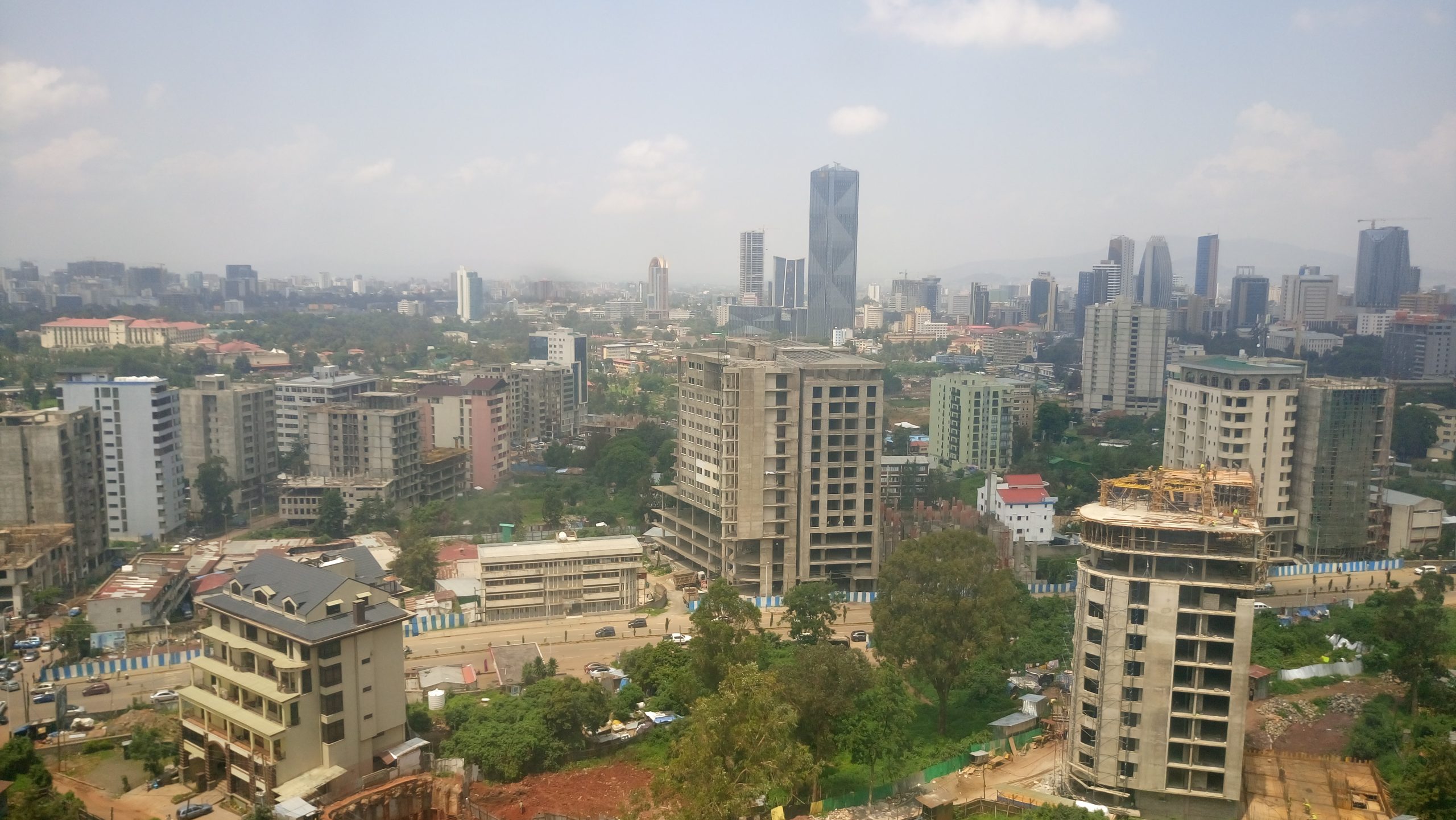The agreement recently negotiated between the Government of Ethiopia and the International Monetary Fund (IMF) not only imposes austerity on the government, but also risks destroying the country’s model of economic development.
Ethiopia, Africa’s second-most populous country, has featured tremendous progress in its economic development in the past twenty years. A developmental state driving public investment while imposing tight regulations on the financial sector, a managed exchange rate, and capital controls, achieved a significant decline in hunger and malnutrition, and improvements in literacy and other relevant human development indicators.
Nonetheless, Ethiopia is facing serious macroeconomic challenges including high inflation of close to 30 percent, a current account deficit, foreign exchange shortage, and slowing growth, jointly with domestic conflicts and climate change impacts. This situation has forced the country into negotiations with creditors on its external debt, even though Ethiopia’s external debt stock compared to GDP is less compared to other low-income countries. International financial institutions see government budget deficits as the main culprit in causing inflation and an overvalued real exchange rate that causes trade deficits and balance-of-payments problems while crowding out private investment in the country. End of July 2024, the Government of Ethiopia and the International Monetary Fund (IMF) concluded an agreement on policy action to be taken for a stepwise release of a loan of USD 3.4 billion from the IMF, starting with the immediate release of USD 1 billion, as well as additional grants and loans from the World bank. The agreement is built on the following cornerstones: 1) floating the exchange rate; 2) modernizing the monetary policy framework going from reserve targeting to interest rate targeting; 3) ending monetary financing of the government budget via the National Bank of Ethiopia (NBE) and exiting financial repression; 4) improving mobilization of domestic government revenues; 5) debt restructuring with external creditors; 6) strengthening the financial position of state-owned enterprises.
What is wrong with the analysis?
This analysis of Ethiopia’s situation is misguided. Starting with inflation, closer look at the Ethiopia’s government budget shows that over the past years, there have only been deficits if capital expenditures and current expenditures are considered jointly. Yet, keeping capital expenditures separately (it is appropriate to finance new investment with new loans to match additional output with additional money) reveals that current expenditures are more than covered by revenues meaning that the current budget is not even facing a deficit. Rather than by the narrow monetarist focus on government budgets, inflation can be better explained by past currency devaluations as well as various supply-side bottlenecks. For instance, multiple domestic conflicts in Ethiopia have impaired agricultural output, which, all along with population growth and urbanization, led to increasing food prices.
To be clear, there are problems arising from Ethiopia’s current economic framework in a situation of foreign exchange shortage: for example, instead of investing export revenues in production capacity, exporters often decided to use the part of foreign currency, which they were not obliged to surrender to the NBE, to exchange it at a favorable rate in the illegal parallel market or to illegally import consumer goods, which are sold at high prices domestically due to import restrictions. As another example, coffee farmers are forced to export coffee via marketing facilitators to earn the country foreign exchange. Yet, farmers would prefer to sell it in the domestic market where they could realize higher prices and better cover ever-growing living costs.
Yet, such phenomena, including the large disparity between the official and the parallel market exchange rate, are symptoms rather than causes of the existing problems. The bottom line is that increasing incomes stemming from Ethiopia’s strong economic growth have given way to growing import demand, which has hit the country’s balance-of-payments constraint. It is import substitution (for instance domestic renewable energy for fossil fuel imports) and export promotion that must do the job to improve the current account, ease foreign exchange shortage. Moreover, the country needs domestic investment, particularly in agriculture, to bring down food prices and overall inflation. This would correct the current wrong systemic incentives and move economic activity away from the parallel foreign exchange market.
What is wrong with the agreement?
In the IMF’s ideal world, the policy action agreed on in the deal will solve the problem: a floating exchange rate means that there is no parallel market anymore; austerity will stabilize prices. Both actions combined will restore international competitiveness because the market exchange rate will be such that imports and exports balance. Private investment will not be crowded out anymore by the government’s borrowing. Instead, it will prosper both domestically and via foreign direct investment (FDI), thus earning the country’s foreign exchange in the future and bringing it on a lasting growth path.
A lot is wrong with this optimistic projection. The most essential question is: how will the availability of foreign currency change as a result of the agreement’s implementation? The trade balance, on the one hand, may improve thanks to exchange rate depreciation but it is not clear how significant this effect is because exports (imports) are much more affected by changes in foreign (domestic) incomes than by changes in relative prices. Moreover, we are still to see how much relative prices even change once inflation goes up, thus undoing the nominal depreciation. On the other hand, the agreement has led to the removal of previous bans on some import goods, which is now increasing import demand. Income flows will lead to an additional loss of foreign exchange because foreign investors are now allowed to repatriate their profits more easily. It is doubtful that this can be counterbalanced by inflows from growing foreign investment itself. Other flows such as remittances and official development assistance, beyond international financial institutions’ bailout, will supposedly not change significantly. “Strengthening the financial position of state-owned enterprises” essentially comes to privatization such as it has been announced for Ethio Telecom, meaning that the government is planning to sell out precious and strategic assets. This will yield short-term returns, including conditional finance from the World Bank, but a continued drain of foreign exchange from profit repatriation.
At the time of writing this text, the exchange rate has depreciated by about 100 percent. The NBE facilitates the floating regime by holding foreign exchange auctions with commercial banks to determine the rate. For the time being, this is quite a restricted foreign exchange market with the NBE as the key regulator by deciding on foreign exchange supply. Moreover, the current regulations still include some foreign exchange retention requirements and relatively tight capital account restrictions. Exchange rate floating thus only takes place within restrictions, which is why the parallel market is expected to stay in place since on the capital account side of the balance of payments, money is still trying to leave the country.
Taking stock of the economy’s expected structural change, it seems like in the short term there are additional foreign exchange losses whereas the additional inflows may or may not take place in the middle to long term. Immediate crisis is avoided by injections of foreign exchange from international financial institutions and, maybe, privatization returns. Overall, a larger share of foreign exchange trading may go through official channels than via the parallel market as compared to the previous situation, but a loss of foreign exchange is still a loss. It remains to be seen how far the Government of Ethiopia is willing to satisfy the IMF’s expectations once inflation has started increasing and foreign exchange shortage intensifies again once the additional liquidity that followed the IMF agreement is used up. That would be the opposite of the expected outcome.
If, in such a situation, the journey continues towards more liberalization to give the country more of the same medicine, the next step would be the removal of capital controls. Money currently being restricted from leaving the country could turn into a surge of capital flight, putting further pressure on the exchange rate and becoming self-enforcing. The NBE would have to use foreign exchange reserves to entertain capital flight. Inflation would shoot up from an already very high rate. In the worst case, balanced trade is not achieved via depreciation directly but indirectly due to collapsing import demand caused by a deep economic crisis. As the IMF states that the NBE “may have to take further policy action by raising interest rates to ensure inflation quickly returns to a downward path”. To be less diplomatic, the NBE would have to increase its policy rate by an enormous amount in its fight against currency depreciation because the alternative policy instruments such as capital controls would have been removed. Given such a scenario, it is hard to imagine how private investment shall come in and bring the economy on a sustainable growth pattern, let alone the investment in key sectors to ensure food security, external balance, and internal structural change. There is still a window of opportunity for the Government of Ethiopia not to pursue this path to its end but to embrace more effective reforms.
The reforms needed
This critical view shall not deny that there is need for reform. The new monetary policy framework that the NBE announced while the negotiations were still going on is a step in the right direction. So far, the monetary policy has been conducted in a rather monetarist way by targeting reserve growth, which constrained lending to productive and green investment. In contrast to the IMF’s misguided approach to monetary theory, this framework will allow the banking system to accommodate credit demand and finance public investment to co-exist with private investment without any crowding-out. Public investment must play a key role to achieve the joint goals of domestic growth, price stability, poverty reduction, and a stable balance of payments. Austerity, high interest rates, and selling out public assets are the opposite of what is needed. Instead, regulation of the external account is necessary to maintain the Government’s policy space.
Moreover, while the real exchange rate may not be the most critical variable defining trade performance, it is clear that a fixed rate has led to real overvaluation after years of high inflation. Yet, this does not require a floating rate and the removal of capital controls. A (stepwise) devaluation can achieve the same goal. Likewise, increasing mobilization of government revenues is a welcome move if it takes poor households’ financial constraints into account. But again, this is a domestic issue that does not need financial liberalization.
It also must be admitted that Ethiopia needs FDI to facilitate technology transfer and increase the economy’s productivity. But this should not come with treating all capital flows the same way, irrespective of whether they contribute to long-term growth or are merely looking for short-term profits.
The coming months, and possibly years, including the continued debt restructuring negotiations with creditors, will show if the Government of Ethiopia is willing to maintain and improve the key parts of its successful development model. The alternative will be most likely be capital flight, austerity, and a tight constraint on long-term development.
Basil Oberholzer is Senior Associate Research Scientist at the Centre for Development and Environment, University of Bern, Switzerland. You can reach him at: [email protected].
Photo: Addis Ababa. Rights reserved to DevEcon and the author
Publisher: Source link











